Which Hummingbird Species Built a Nest in our Yard?
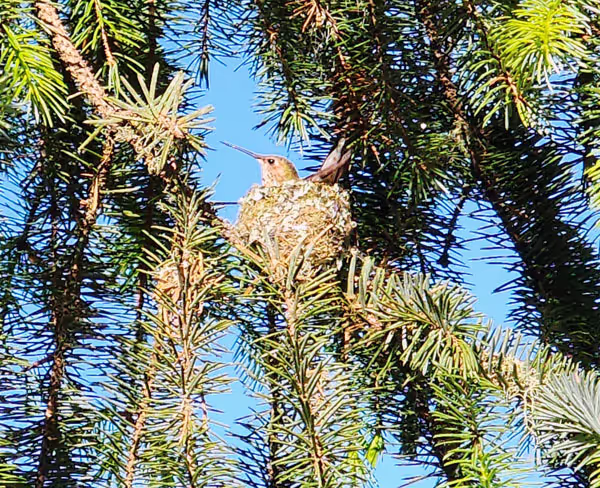

Introduction
A few weeks ago, my family and I discovered that a Hummingbird has made a nest in one of the trees in our yard here in Ocean Shores. We don’t know when exactly the Hummingbird built her nest. However, we can report that she seemed happy in it, and dutifully tended to her eggs for a couple of weeks, only leaving them to feed.
And then, one day, it seemed as though she disappeared and abandoned her nest. We didn’t see her for more than a week. Questions began to swirl through our minds.
In the end, our worries were eased last Thursday when we saw the Hummingbird in her nest once again. She seemed to be doing well, and was tending to her eggs as if she had never left. The very next day, the eggs hatched, and two baby Hummingbirds emerged. We are pleased to report that all three are doing well.
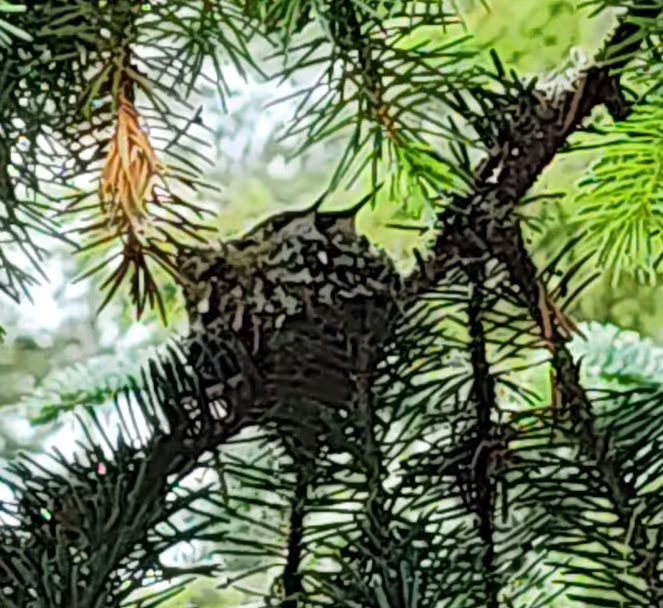
We expect that the Mother Hummingbird will stay close to the nest for the next week to week-and-a-half to keep her nestlings warm while their pinfeathers grow. Their pinfeathers allow them to regulate their own body temperatures (12). Without their pinfeathers, they won’t be warm enough to survive on their own. Once they do have their pinfeathers, the Mother Hummingbird will start spending considerably more time away from the nest (12). The reason is that her presence draws attention to the nest and can tell dangerous predators that ‘there is an easy meal here’. By staying away, the Mother Hummingbird reduces the risk that her nestlings will fall victim to a hungry predator (12).
When the Mother Hummingbird does come for a visit, she won’t be staying for long. It can lake less than five seconds for a Mother Hummingbird to feed her nestlings (12). If you do so much as blink, you will most likely miss it. Additionally, the presence of humans may be enough to keep the Mother Hummingbird from visiting the nest (12). Therefore, it is wise to keep your distance from Hummingbird nests so that both Mother and nestlings can have the best chance of living safe and productive Hummingbird lives.
Which Species is she?
Since discovering the Hummingbird and her nest, my family and I have been trying to figure out which species of Hummingbird she is.
There are five species of Hummingbird that can be found in Washington State: the Rufous Hummingbird (1), the Anna’s Hummingbird (1), a cross-bred Anna’s Hummingbird (8), the Calliope Hummingbird (1), and the Black-Chinned Hummingbird (1).
We were able to narrow the list of species that she could be down to three possibilities: a Rufous Hummingbird, a regular Anna’s Hummingbird, or a cross-bred Anna’s Hummingbird. We ended up deciding that she is most likely an Anna’s Hummingbird. Here is what led us to this conclusion.
Narrowing it Down
As part of our research, I found some charts from Birds Connect Seattle, formerly known as the Seattle Audubon Society. The charts showed which species of Hummingbird appear in which parts of our state and how often they appear (2-5). Using those charts, I was able to quickly rule out the Calliope Hummingbird and the Black-Chinned Hummingbird as the charts did not have either species listed as spending any time on the Washington Coast (4, 5). However, another member of my family noted that the charts were twenty years old, which meant that they might not be accurate anymore. They proceeded to track down newer maps from Birds Connect HQ, which also showed that neither species spends time on the Washington Coast (7). Therefore, it is safe to say that the Hummingbird in our yard is not a Calliope Hummingbird or a Black-Chinned Hummingbird. That being said, I wasn’t finished with the charts from Birds Connect Seattle, and they would prove to be inaccurate in regards to another species of Hummingbird.

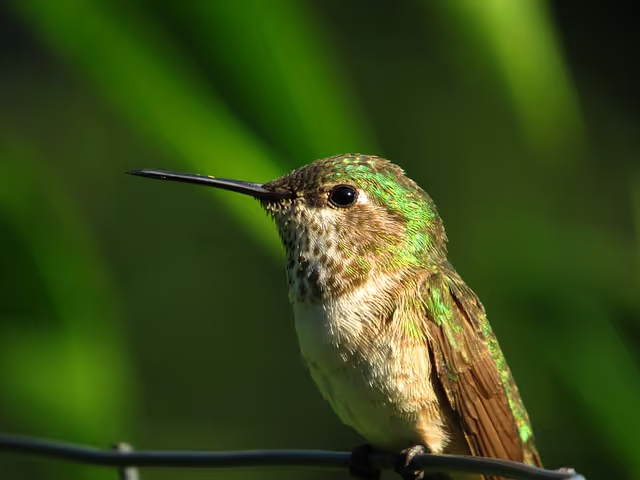
I thought she was a Rufous…
After initially ruling out the Calliope and Black-Chinned Hummingbirds, but before learning that the charts from Birds Connect Seattle were twenty years old, I began eyeing Anna’s Hummingbird and the Rufous Hummingbird.
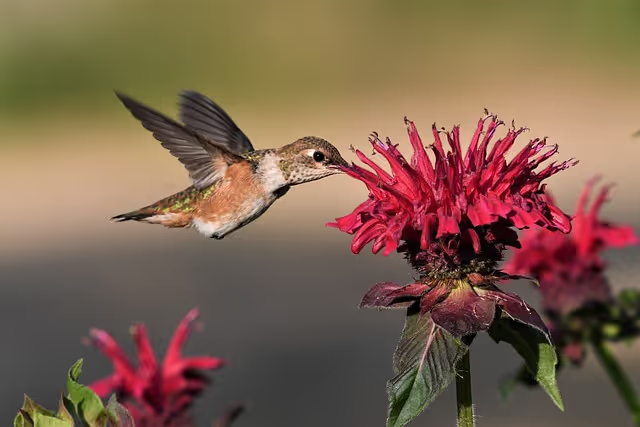
The chart listed Anna’s Hummingbird as being a rare sight on the Washington Coast (2). This led me to believe that the Hummingbird in our yard was most likely not an Anna’s Hummingbird since the odds of seeing one on a coastline as long as ours seemed to be very low, given that they were supposed to be a “rare” sight. The possibility seemed so remote to me that I, perhaps rather foolishly, ruled it out, and decided that the Hummingbird in our yard was the Rufous Hummingbird, which was only the species of Hummingbird listed by the Birds Connect Seattle charts as being a regular sight on the Washington Coast (3). However, this conclusion didn’t last long as new evidence began pointing strongly in the direction of Anna’s Hummingbird.
…but she’s actually an Anna’s
The new evidence pointing to the Hummingbird in our yard being an Anna’s Hummingbird came partially in the form of newer range maps from eBird and Birds Connect HQ. They indicated that Anna’s Hummingbirds are becoming a more common sight on the Washington Coast (7, 9). We don’t know why they are apparently showing up more on the coast, specifically. However, it has been suggested that their growing presence in the Pacific Northwest as a whole may have to do with warming temperatures, increased urbanization, and/or increased access to supplementary food sources (most notably bird feeders) (10). Since the species is now believed to be more common on the Washington Coast than it was twenty years ago, the possibility of it being an Anna’s Hummingbird wasn’t as remote as I thought.
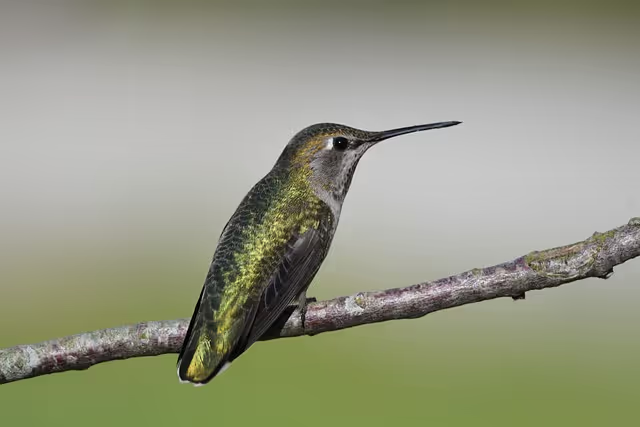
Additional new evidence came from another family member, who discovered that the Hummingbird in our yard has no red on her body. Female Rufous Hummingbirds have some “rusty-washed” flanks on their bodies and some rusty patches on their tails (6). Female Anna’s Hummingbirds have no red on their bodies (13). With this new fact now taken into account, it became evident that the Humming Bird in our yard was well and truly an Anna’s Hummingbird.
Coming Up
Now that we know that the Hummingbird in our yard is an Anna’s Hummingbird, we are going to continue to enjoy her presence, as well as the presence of her nestlings. We will do so cautiously and respectfully, in order to help continue to make our yard inviting and comfortable for them. We look forward to watching the nestlings grow and bearing witness to their earliest days of life.
Our Hummingbird journey is also going to continue here on the Coastal Interpretive Center blog. Now that we have spent an entire post laying out how we identified the Hummingbird in our yard and providing some information about them, we believe that more formal introductions are in order. In the coming weeks, we will have dedicated posts spotlighting Anna’s Hummingbird and the Rufous Hummingbird, which are the two species of Hummingbird that you are most likely to see here on the Washington Coast. We hope you will stay tuned for those.
Thanks for reading, and all hail Hummingbirds!
References
© Ian D. Caldwell, June 2023
Touch whale bones, examine shipwreck artifacts and connect with the coast's living history.

Support our mission, get involved in educational programs, or contribute through donations and volunteering.